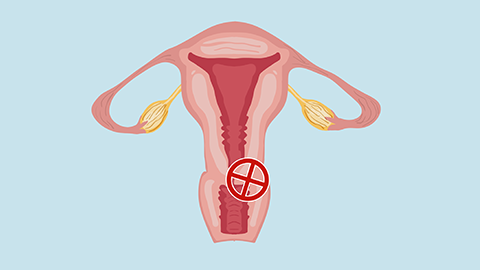What to do about uterine atrophy after menopause
Generally, postmenopausal uterine atrophy may be caused by factors such as decreased hormone levels after menopause, hormonal changes during lactation, endometrial polyps, diminished ovarian reserve, and pituitary microadenoma. Patients can choose general management, pharmacological treatment, or surgical intervention according to their specific situations. Detailed explanations are as follows:
1. Hormonal Decline After Menopause
After menopause, ovarian function completely ceases, and estrogen secretion nearly disappears. The uterus, deprived of estrogen's nourishing and supportive effects, gradually exhibits atrophic changes such as thinning of the myometrium and reduced size. This is a normal physiological degeneration process. In daily life, women can consume more foods rich in phytoestrogens, such as soybeans, black beans, and soy products. Regular moderate exercise, such as walking or square dancing, should be maintained to enhance physical resistance. Routine gynecological examinations are also recommended to monitor the health of the uterus and its appendages.
2. Hormonal Changes During Lactation
During lactation, elevated prolactin levels in the female body inhibit ovarian ovulation and estrogen secretion. Under these low-estrogen conditions, the uterus temporarily shrinks but typically returns to normal size after lactation ceases and menstruation resumes. During lactation, it is important to maintain a balanced diet rich in protein sources such as chicken, fish, and milk to promote physical recovery. Adequate rest should be ensured, excessive fatigue avoided, and a positive mental state maintained.

Endometrial polyps can interfere with normal endometrial metabolism and repair. Long-standing polyps may impair local blood supply to the uterus, leading to tissue atrophy in affected areas, often accompanied by symptoms such as intermenstrual bleeding and prolonged menstruation. Small polyps can be treated with medications such as dydrogesterone tablets, progesterone capsules, and medroxyprogesterone acetate tablets under medical guidance to inhibit polyp growth. If the polyps are large or symptoms are significant, hysteroscopic polypectomy is recommended, followed by regular follow-up to prevent recurrence.
4. Diminished Ovarian Reserve
Reduced ovarian reserve leads to gradually declining estrogen levels, which cannot sustain the normal structure and function of the uterus, resulting in uterine atrophy. This may be accompanied by symptoms such as prolonged menstrual cycles and reduced menstrual flow. Under medical guidance, hormone-regulating medications such as estradiol valerate tablets, conjugated estrogens tablets, and progesterone soft capsules may be used to supplement estrogen and delay uterine atrophy. It is important to avoid late nights, ensure sufficient sleep, reduce further damage to ovarian function, and maintain a relaxed and positive mindset to avoid excessive psychological stress.
5. Pituitary Microadenoma
A pituitary microadenoma can interfere with the secretion of gonadotropins, thereby suppressing ovarian function and reducing estrogen production. The uterus may atrophy due to insufficient hormonal support and may be accompanied by symptoms such as headache and blurred vision. Medical treatment under professional guidance may include medications like bromocriptine mesylate tablets, cabergoline tablets, and quinagolide tablets to control tumor growth and regulate hormone secretion. Regular pituitary imaging examinations are necessary to monitor tumor size changes. If medication proves ineffective, surgical treatment should be considered.
In daily life, maintaining healthy lifestyle habits is important, including avoiding harmful behaviors such as smoking and excessive alcohol consumption. A balanced diet with reduced intake of spicy and greasy foods is also recommended.





